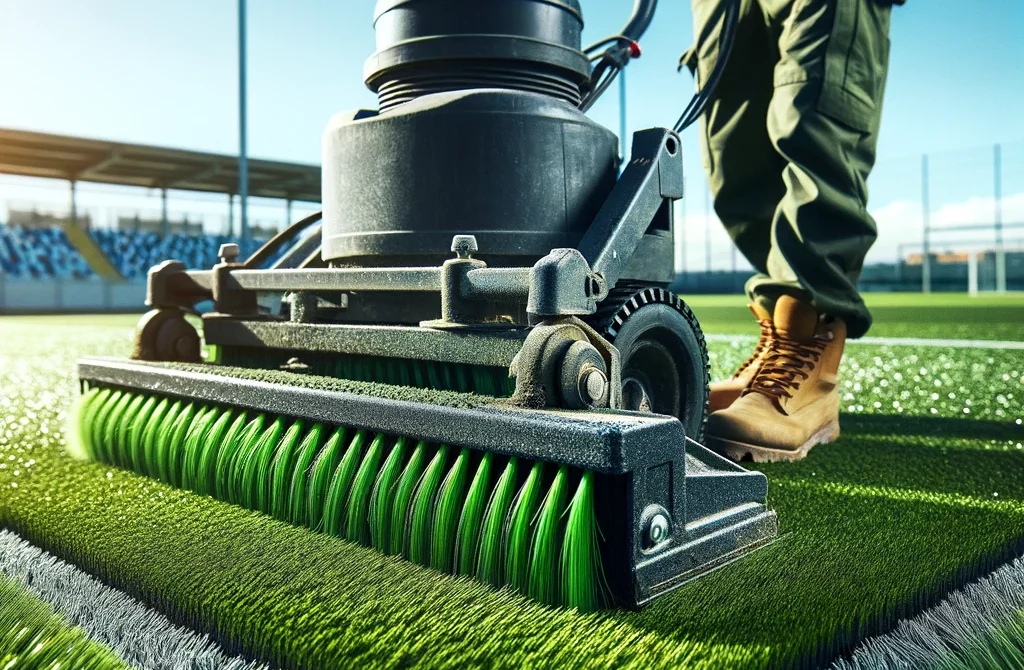Artificial turf, with its lush, green appearance and low maintenance requirements, has become a popular choice for sports fields, landscaping, and recreational areas. Unlike natural grass, it doesn’t require watering, mowing, or fertilizing, making it an eco-friendly and cost-effective option. However, to ensure its longevity and maintain its aesthetic and performance qualities, regular maintenance is essential. In this comprehensive guide, we’ll dive into the best practices for artificial turf maintenance.
Understanding Artificial Turf
Before we delve into maintenance, it’s important to understand what artificial turf is. Artificial turf consists of synthetic fibers made to mimic the look and feel of natural grass. It’s built on a drainage layer, ensuring that water doesn’t pool on the surface. Despite its durability, artificial turf can wear down or get damaged over time without proper care.
Routine Maintenance Tasks
Debris Removal
The first step in artificial turf maintenance is keeping the surface clean. Leaves, twigs, and other debris can accumulate on the turf, affecting drainage and aesthetics. Use a leaf blower or a plastic rake regularly to keep the turf clean. Avoid metal rakes as they can damage the fibers.
Brushing
Regular brushing helps prevent the turf fibers from becoming matted. Use a synthetic-bristle brush to gently comb the turf. This should be done more frequently in high-traffic areas to ensure an even, upright grass appearance.
Spot Cleaning
Spills and stains are inevitable, especially in areas used for dining or sports. Most spills can be cleaned with water and mild detergent. For stubborn stains, a solution of water and household vinegar can be effective. Always blot spills rather than rubbing to avoid pushing the spill deeper into the turf.
Advanced Maintenance Procedures
Infill Replenishment
Infill plays a crucial role in the performance of artificial turf, providing cushioning and support to the fibers. Over time, the infill can become compacted or dispersed. Annually check the infill level and add more if necessary to maintain the turf’s resilience and appearance.
Aeration
Though artificial turf doesn’t soil compact in the same way as natural grass, the base can still become compacted, especially in high-traffic areas. Aeration helps maintain proper drainage and prevents the base from hardening. Specialized equipment is required for this task, so it may be best to hire professionals.
Weed Prevention
Weeds can occasionally sprout around the edges or through the drainage holes of artificial turf. Regularly inspect the turf for weeds and remove them by hand or use a water-based weed killer. Avoid oil-based products as they can damage the turf.
Addressing Repairs
Promptly addressing minor repairs can prevent more significant issues down the line. Seams and edges are particularly prone to wear and tear. If you notice lifting or separation, contact a professional for repairs to prevent further damage or potential injuries to users.
Professional Maintenance Services
While many aspects of artificial turf maintenance can be handled in-house, professional services can offer deeper cleaning, specialized repairs, and advice on maintaining your specific turf type. Annual or semi-annual professional maintenance can significantly extend the life and performance of your artificial turf.
Conclusion
Artificial turf is a durable, attractive, and low-maintenance alternative to natural grass, but it isn’t maintenance-free. Regular cleaning, brushing, and inspections can go a long way in maintaining its appearance and functionality. By following these maintenance guidelines, you can enjoy the benefits of artificial turf for many years to come, ensuring a safe and inviting space for sports, recreation, or relaxation. Whether you manage a sports complex, a school field, or a backyard landscape, proper care of your artificial turf is key to its longevity and performance.



